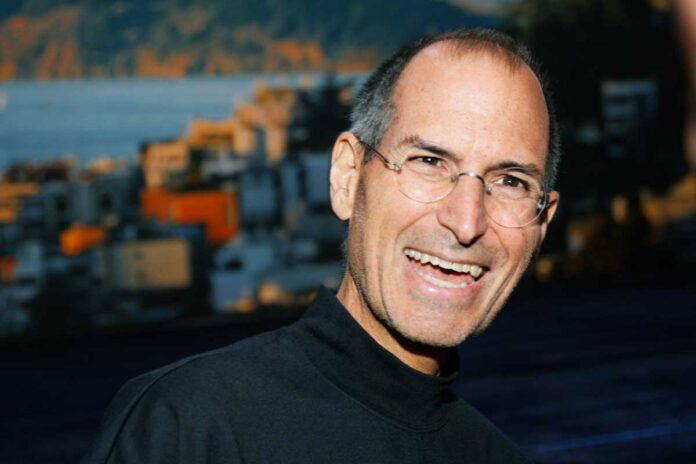Jobs loses the showdown
In the end of May 1985, Job lost his responsibilities and was demoted to the post of the chairman. In September 1985, the Apple co-founder, left with a handful of people in order to found NeXT Computer. Jobs “I’m only 30 years old and I want to have the chance to continue creating things.” Jobs wrote in his farewell to Mike Markkula:
Dear Mike,
This morning’s papers carried suggestions that Apple is considering
removing me as Chairman. I don’t know the source of these reports, but they are
both misleading to the public and unfair to me.
You will recall that at last Thursday’s board meeting I stated that I had
decided to start a new venture, and tendered my resignation as Chairman.
The board declined to accept my resignation and asked me to defer it for
a week. I agreed to do so in light of the encouragement the Board offered with
regard to the proposed new venture and the indications that Apple would invest
in it. On Friday, after I told John Sculley who would be joining me, he
confirmed Apple’s willingness to discuss areas of possible collaboration
between Apple and my new venture.
Subsequently the Company appears to be adopting a hostile posture toward
me and the new venture. Accordingly, I must insist upon the immediate
acceptance of resignation. I would hope that in any statement it feels it must
issue, the Company will make it clear the decision to resign as Chairman was
mine.
I find myself both saddened and perplexed by the management’s conduct in
this matter which seems to me contrary to Apple’s best interests. Those interests
remain a matter of deep concern to me, both because of my past association with
Apple and the substantial investment I retain in it.
I continue to hope that calmer voices within the Company may yet be
heard. Some Company representatives have said they fear I will use proprietary
Apple technology in my new venture. There is no basis for any such concern. If
that concern is the real source of Apple’s hostility to the venture, I can
allay it. As you know, the company’s recent reorganization left me with no work
to do and no access even to regular management reports. I am but 30 and want
still to contribute and achieve.
After what we have accomplished together, I would wish our parting to be
both amicable and dignified.
Yours sincerely,
Steven P. Jobs
The reactions of the Apple employees on the de facto sacking of Jobs revealed both sides of him. Andy Hertzfeld, one of the founders of Macintosh, mourned Jobs although he as well had been driven by his crude methods. “Apple never recovered from losing Steve. Steve was the heart and soul and driving force. It would be quite a different place today. They lost their soul.,” said the software developer, who left Apple after Job’s departure and recently grabbed the headlines by designing Google+.
Larry Tesler, who came to Apple from Xerox also openly brought up the dark side of the co-founder: “People in the company had very mixed feelings about it. Everyone had been terrorized by Steve Jobs at some point or another and so there was a certain relief that the terrorist had gone but on the other hand I think there was an incredible respect for Steve Jobs by the very same people and we were all very worried – what would happen to this company without the visionary, without the founder without the charisma… “
In 1985 Jobs sold all but one of his Apple shares, and had around 70 million dollars on his account. By chance he became aware of the sale of the animation department of George Lucas. The Star Wars director had divorced his wife in 1983 and was broke. At least Lucas could no longer afford to put millions of dollars into the innovative but economically not very successful “Graphics Group” of Lucasfilm year after year.
Jobs bought the department from Lucas for five million dollars and invested another five million more into the company, which was now named Pixar. While developing the Macintosh, Jobs had taken care of even the smallest detail, and his unwillingness to compromise had repeatedly gotten on the nerves of his employees. At Pixar, however, he gave much freedom to his management department. But initially, this freedom did not pay off. Sales of the core product, the Pixar Image Computer used for the animation of film sequences, were slow. But the short films of genius Pixar employee, John Lasseter, received one award after the other, even though the film strips were only meant to demonstrate the performance of Pixar’s hardware. For that reason, in the early nineties Pixar focused on the movies themselves and no longer on the hardware.
Becoming a billionaire with ”Toy Story”
The breakthrough was made by Lasseter’s team with the computer-animated cartoon “Toy Story”, which Pixar got produced for Disney. With a production budget of $30 million, the cartoon brought over 360 million dollars at the box office and in the secondary market. On 29th of November 1995, shortly after the release of “Toy Story”, Pixar went public.
Jobs’ new computer company NeXT had a very different structure than Pixar, as it was fully focused on the boss. Here Jobs wanted to create a computer he was not allowed to build at Apple. When the cash reserves ran low and still no product was in sight, he coaxed 20 million dollars out of multi-millionaire Ross Perot to build a modern factory for the production of NeXT. He commissioned the legendary designer Paul Rand, who had previously designed the IBM logo, to design a NeXT logo, and the German designer Hartmut Esslinger created the legendary black cube housing. Steve Jobs took care of details that could hardly be communicated to his employees.
For example, he demanded that the screws for the computer got an expensive coating and that the matt black paint was applied on the inside of the body as well, although the user would never get to see this. “He was not familiar with compromise,” said Esslinger. Anyone who tried a NeXT cube was usually enthusiastic about it. But the price of $6,500 for the NeXT cube was still too much for most of the potential clients. There was also at that time very little software available for this powerful workstation so that a total of only about 50,000 systems were sold. Therefore, similar to the first Macintosh, Jobs found only few buyers for his expensive hardware. Nevertheless, among the European users of NeXT was the British scientist Tim Berners-Lee, who developed the concept of the World Wide Web and the first browser on a black NeXT cube at the CERN Research Center in Geneva.
During this time, Archibald Horlitz, head of Germany’s largest Apple retailer Gravis, met Steve Jobs. Horlitz had heard about the new project and during a trip to California spontaneously knocked on the door of NeXT, in order to have the system demonstrated by the head of the company himself. “Steve Jobs had several facets. If he wanted something, he could be one of the most charming people in the world,” recalls Horlitz. “I’ve heard from a colleague at NeXT, how typical interviews were carried out. He took the people literally into his arms and went with them for one or two hours around the Stanford campus.
“When they came back, they were enlightened and could imagine nothing better than to work for him.” In this way Jobs could retain a great number of big talents such as Avie Tevanian or Scott Forstall. But there was no sign of NeXT’s economic recovery. The company burned through an alarming amount of money and Jobs financial reserves (before Pixar’s initial public offering) were slowly running out. In 1993 he put on the emergency brake at NeXT, fired many employees, and stopped the hardware production. From that moment on, NeXT focused solely on the software development. And, it sounds like a staircase wit of history: Through this strategic decision, Steve Jobs came back into the game at his first company Apple.
Read next page: NeXT saves Apple




[…] The Legend of Steve Jobs – His Life and Career » Mac History. Steve Wozniak and Steve Jobs […]
[…] time Apple has used an iconic design for an iOS app. The original iOS calculator used a design that paid homage to the classic Braun ET44 calculator. Apple SVP of Industrial Design Jonathan Ive is well-known as […]
[…] time Apple has used an iconic design for an iOS app. The original iOS calculator used a design that paid homage to the classic Braun ET44 calculator. Apple SVP of Industrial Design Jonathan Ive is well-known as […]
[…] time Apple has used an iconic design for an iOS app. The original iOS calculator used a design that paid homage to the classic Braun ET44 calculator. Apple SVP of Industrial Design Jonathan Ive is well-known as […]
[…] of German designer Dieter Rams defender simplicity and functionalism to inspire Steve Jobs and his Apple universe, in addition to Banzi, which would connect his brain chips from the first approach to […]
[…] Dieter Rams, defensor p la simplicidad junto con el funcionalismo que inspiraría a Jobs y a su universo Apple, además p a Banzi, que conectaría los chips p su cerebro a partir p ose primer acercamiento a la […]
[…] was the graphical user interface. I thought it was the best thing I’d ever seen in my life” (Steve Jobs 1995) Inspired by this amazing experience in 1983 Steve Jobs brought out “The Apple […]
[…] influenced the designers at Apple. See here and here. I’m not about to have a rant about the brazen similarities, its more to […]
[…] read about Steve Jobs and Dieter Rams. It talks about how Steve Jobs was highly influenced by the many years of work and design success […]
[…] Dernbach, Christoph. “The Legend of Steve Jobs – His Life and Career.” Mac History, Mac History, 1 Feb. 2015, https://www.mac-history.net/steve-jobs/2012-10-30/the-legend-of-steve-jobs-his-life-and-career […]
[…] Dieter Rams, defensor de la simplicidad y el funcionalismo que inspiraría a Steve Jobs y a su universo Apple, además de a Banzi, que conectaría los chips de su cerebro a partir de ese primer acercamiento a […]
[…] should regard Steve Jobs as a true legend who always led by example. He has an amazing and inspiring story that should instill a sense of […]